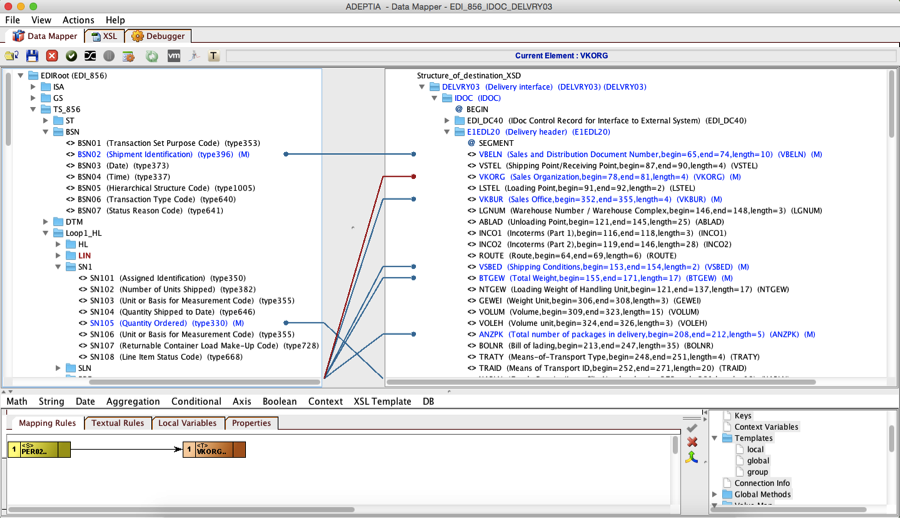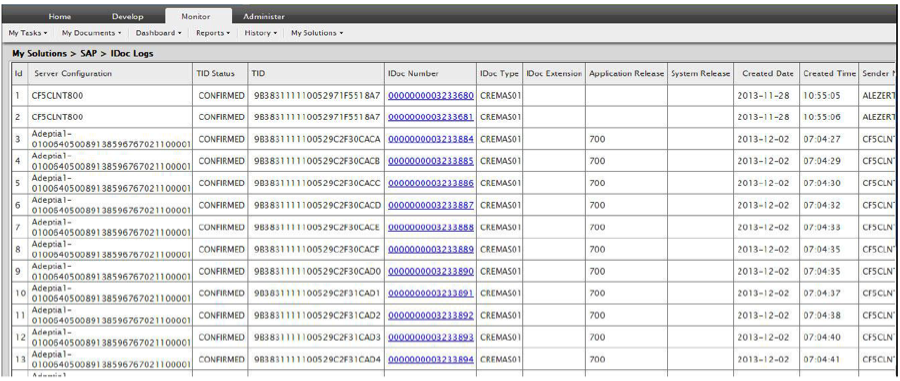EDI Integration with SAP IDoc
Electronic data interchange (EDI) enables business users homogenize diverse structures of identical datasets (such as orders, delivery notes, invoices, inventories, price catalogs, etc.,) to speed up digital transactions with minimum error, at maximum speed, with the lowest cost.
However, in order to enable the transfer of transactional information and ultimately reap benefits, business users will need an IDoc (Intermediate Document) which is an SAP file format. These IDocs further need to be integrated with EDI messages to streamline the transfer process. And here comes the role of an integration solution.
By mapping and integrating EDI messages with SAP IDoc formats, business users can streamline their B2B data exchange processes.
Ayoshya self-service-based solution makes it easy for all business users developers to integrate EDI messages with SAP IDoc and BAPI without excessively relying on IT or developer teams.
What Are the Advantages of in Using Ayoshya for EDI to SAP Integration?
- Easy to connect and send/receive IDoc or BAPI data, little coding needed
- Integrate SAP with any on-premise or cloud EDI application
- Rich SAP logs dashboard that shows the status of all the transactions
- Certified SAP Integration partner
- Outbound processing of a large amount of IDocs with multiple self-registering RFC servers.
- Inbound processing, i.e. transfer of IDocs to an R/3 system with an RFC client.
- Full implementation of tRFC in both RFC server and RFC client.
- Graphical mapping interface with data validation
- Meta-driven SOA framework to rapidly build and deploy new services into production
- Access to EDI data dictionaries, SAP IDoc and BAPI schemas
How Can Businesses Integrate EDI with SAP IDoc?
There are 2 simple steps to integrate an EDI message to SAP IDoc, in this example we will summarize the steps on how to map EDI 856 (Shipment Notice/Manifest) to SAP IDoc DELVRY03 document.
STEP 1: Map EDI to SAP IDoc
Create a mapping service between the inbound EDI to SAP IDoc. Adeptia’s AI-based graphical data mapper shows the specific EDI message schema and the IDoc schema. ayoshya SAP Adapter allows user to search for any IDoc automatically and select the particular IDoc that is needed for the SAP EDI mapping. The developer would then apply the mapping rules to convert the EDI to IDoc. This is a one-time effort since the mapping can be used in any orchestration where EDI 856 needs to be converted into SAP DELVRY03.
At run-time when the orchestration executes this data mapping service, the EDI data will be converted to IDoc.
Here’s an example of the EDI to IDoc mapping.


STEP 2: Deliver the IDoc to SAP through an orchestration
The final step is to design an orchestration that allows inbound EDI files to be delivered to SAP using the Ayoshya SAP Adapter. Here’s a sample process of EDI idoc mapping in sap where an incoming EDI file is being sent to SAP PI/XI server. The mapping service created in step 1 is embedded as a second activity in the flow. Process picks up new EDI message and converts it to IDoc and delivers it to the SAP server.

Run-time transactional logs are available to check the status of each transaction.




